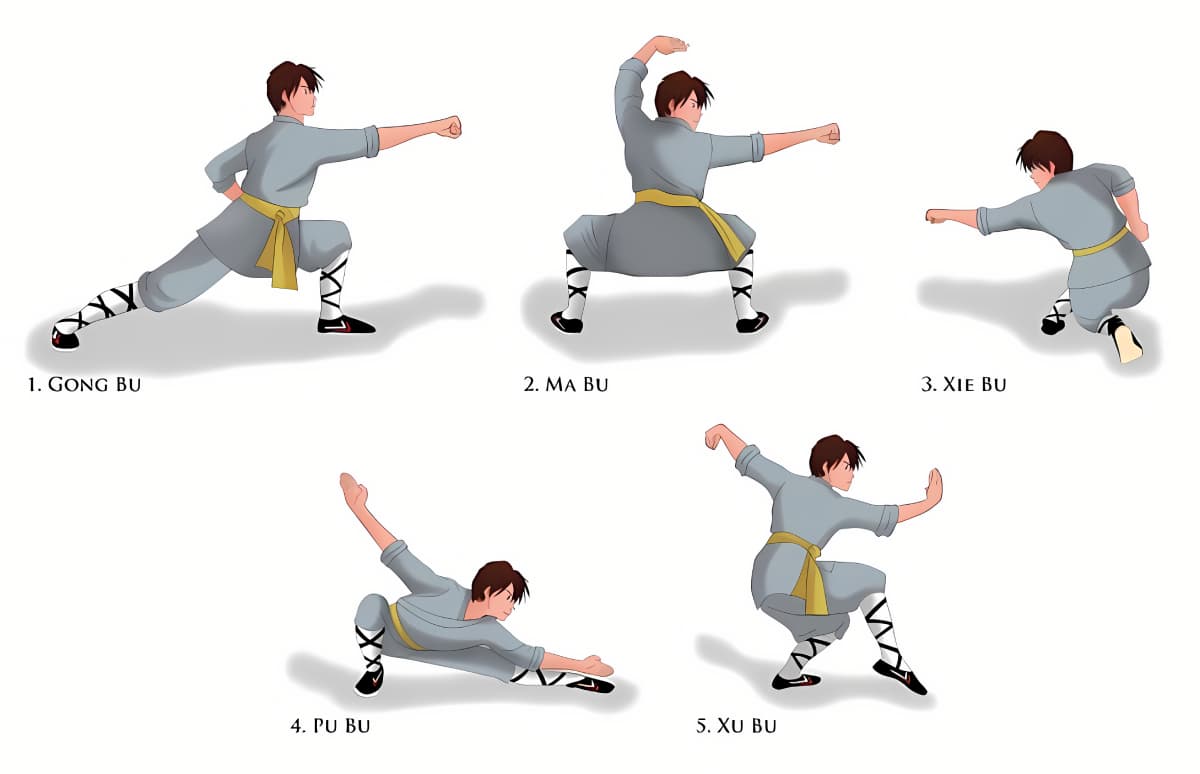
Shaolin Kung Fu
Course Details (June - September)
Led by: Shaolin Grandmaster Shi Yan Liang
Location: Outdoors next to child care centre (G-3)
Schedule: Thursdays 12:00 - 13:00
Cost: 50 EUR per calendar month (to be paid in advance)
Level: All levels combined (beginners are welcome)
Registration: You may register on a monthly basis and start whenever convenient.
What to Expect from Shaolin Kung Fu Training
Shaolin Kung Fu offers a powerful blend of physical training and mindful movement. Each session begins with energising warm-ups and deep stretching, followed by flowing sequences that enhance flexibility, coordination, and body awareness. The practice supports joint health, improves mobility, and builds muscular strength and endurance. It also encourages mental focus and discipline, making it a well-rounded practice for all age groups. No prior martial arts experience is necessary to join and benefit from the training.
Discover Shaolin Kung Fu
A Glimpse into History
Shaolin Kung Fu, originating from the famed Shaolin Monastery in Henan Province, China, boasts a history spanning over 1,500 years. It is deeply intertwined with Chan (Zen) Buddhism, emphasizing that martial arts practice is a path to spiritual enlightenment as much as physical prowess. Legend attributes its formal development to Bodhidharma, who introduced exercises to strengthen the monks for meditation. Over centuries, it evolved into a comprehensive system of combat, health cultivation, and mental discipline, influencing countless martial arts styles worldwide.
The Essence of Training
Shaolin Kung Fu training is multifaceted, encompassing:
- Ji Ben Gong (Basic Skills): Foundation training focusing on stances, footwork, flexibility, strength, and conditioning. These are the building blocks for all advanced techniques.
- Quan Fa (Fist Forms): Pre-arranged sequences of movements that teach combat applications, timing, rhythm, and flow. Forms can be empty-handed or involve traditional weapons.
- Qin Na (Joint Locking): Techniques for controlling an opponent through joint manipulation.
- San Da / San Shou (Free Sparring): Application of techniques in a dynamic, unscripted environment.
- Chan (Zen) Meditation: Cultivating mental stillness, focus, and awareness, which is integral to Shaolin practice.
The methodology emphasizes discipline, perseverance, respect, and a deep connection between mind, body, and spirit.
The Heart of Shaolin: Cultivating Martial Virtue (Wu De)
Beyond the dynamic movements and physical conditioning, Shaolin Kung Fu is deeply rooted in the cultivation of Wu De, or Martial Virtue. This ethical and moral framework is not just an add-on but an essential aspect of the training, guiding the student towards holistic development.
Practicing Wu De involves embodying principles such as:
- Respect (Zūnjìng): For instructors, fellow practitioners, the art itself, and oneself, fostering a supportive learning environment.
- Perseverance & Endurance (Yìlì / Chīkǔ): Developing the tenacity to overcome challenges and embrace the effort required for growth, building mental resilience.
- Discipline (Jìlǜ): Cultivating self-control, focus, and consistency, which translates to greater mental clarity and effectiveness.
- Humility (Qiānxū): Maintaining an open mind, a willingness to learn, and acknowledging that the journey of mastery is continuous.
- Integrity & Righteousness (Zhèngzhí): Acting with honesty and upholding strong moral principles, ensuring skills are used responsibly.
Embracing Wu De transforms Kung Fu training into a profound path for personal growth. It strengthens not only the body but also nurtures the mind and spirit, fostering inner peace, self-awareness, and a greater sense of purpose. These virtues are foundational to building a healthier, more balanced, and resilient self.
Shaolin Grand Master Shi Yan Liang
Grandmaster Shi Yan Liang was born in June 1978 in Yingshang, Anhui Province, into a Buddhist family. At the age of 4, he began to train Kung Fu under the guidance of his uncle, who himself lived in the Shaolin Temple. At 15, he came to the monastery. However, it was not easy to be taken in. After two rejections, he had the courage to ask again. He was then asked to demonstrate his Kung Fu skills to the Abbot, and was finally admitted to the Shaolin Temple. He received the Buddhist name Shi Yan Liang as a student from the venerable Abbot Shi Yong Xin.
In the monastery, Shi Yan Liang embraced a disciplined life, training rigorously from dawn until dusk. From 2000 to 2004 he was appointed as leader of the show group.
In 2004, Shi Yan Liang traveled to the Shaolin Temple Germany for half a year to teach as a trainer. He then returned to China. In 2005, he was sent back to Germany to work as a monk and as the lead training coach. In May 2007 he was sent to Austria to found a Shaolin Temple in Vienna.
In 2010, Master Shi Yan Liang passed the Grand Master examination in China.
On the 1st In October 2011, Grandmaster Shi Yan Liang founded the Shaolin Cultural Center in Vienna, where he still is in charge today.
Shaolin Cultural Centre ViennaTraining Resources
Basic Shaolin Kung Fu Stances
Mastering the fundamental stances is crucial for stability, power generation, and proper form in Shaolin Kung Fu. Below are some common stances you will learn.

Shaolin Kung Fu Forms & Drills (Videos)
Visual aids can greatly assist in learning and refining your Kung Fu forms. Here are some videos relevant to our training. (Videos typically demonstrate warm-ups, basic forms, or specific drills taught in class).